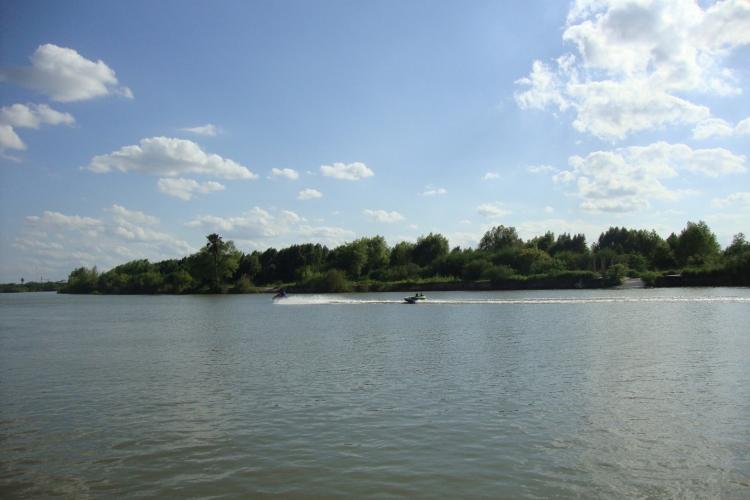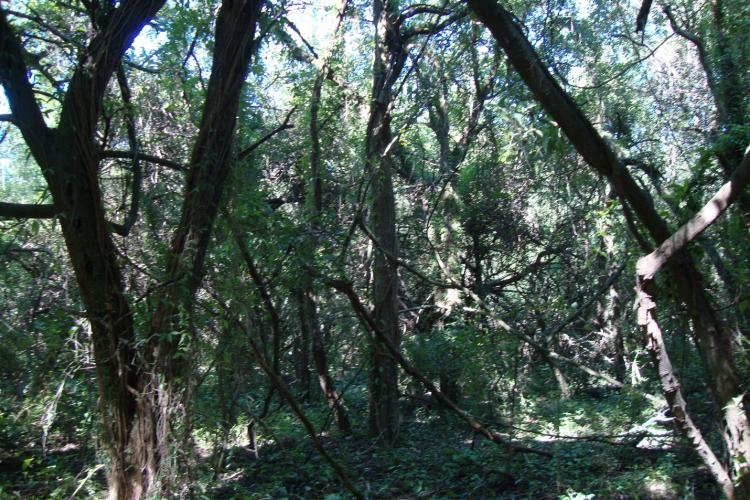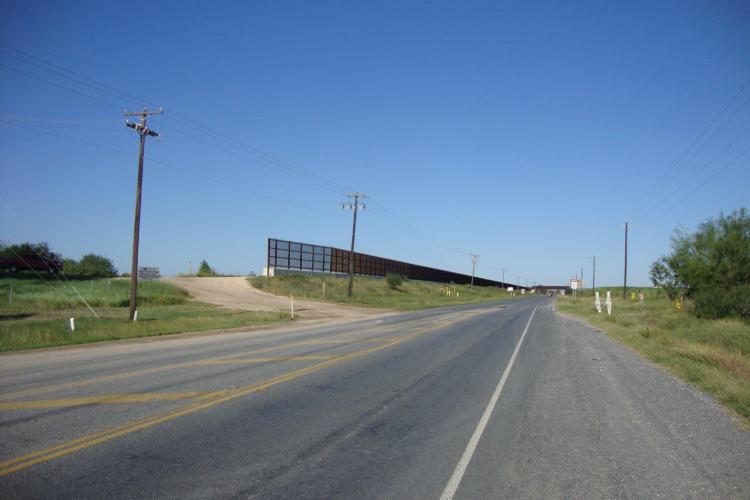Guest post by Xavier Oliveras-González, researcher and profesor, Department of Urban and Environmental Studies at El Colegio de la Frontera Norte, Mexico. His research interests focus on bordering processes, socioterritorial movements and conflicts, non-human agency, and more-than-human geographies. This post is part of a collaboration between Border Criminologies and Geopolitics that seeks to promote open access platforms. As part of this initiative the full article, on which this piece is based, will be free to access here for the next month.

Emotions –biochemical responses– such as despair and hope emerge at the border. In June 2019, a young father and his two-year old daughter, both originally from El Salvador, drowned in a failed attempt to swim across the Rio Bravo / Grande from Mexico into the United States. A few months earlier, and again a few months thereafter, a series of demonstrations were held along the US bank of that same river to protest against the construction of the US border wall.
Even though both events are not related, they coincide in two aspects: the place and the context in which they unfolded. First, both the migrants’ deaths and the no-border-wall protests occurred next to the boundary: on the banks and within the current of the Rio Bravo or Grande, as this river is known respectively in Mexico and in the US. And, second, both events took place in a global context of increasing rebordering, as the building of border fences shows, and increasing migrations, especially of the most vulnerable persons.
The two events also share another, less apparent aspect: the river’s intervention. In both events, the river’s actions affected human bodies, even though in opposite ways. The force of the water drugged the migrants’ bodies downstream and lethally pulled them. And the river’s pleasantness caused corporal and emotional changes among the activists that led them to defend the river and the habitat against what they regard as aggressions on the part of the State.
Such a post-humanist reading of the river and of human bodies leaded me to advance an argument regarding the terrain’s political agency in a recent article published in Geopolitics. In the paper I argue that this river, as well as other spatiotemporal configurations of the terrain, emerge as actors capable of affecting human bodies and prompting them to act. In this case, the river intervenes into two opposing processes: bordering and resistance to bordering. But far from previously being an actor, terrain’s agency emerges under specific circumstances within more-than-human assemblages. In this sense, the river is entangled with human bodies (those of migrants and of activists), and with the US border objects, policies and actions.
This understanding of terrain and its relationship with borders contrasts with more common theoretical perspectives. Contrary to the idea of “natural borders”, terrain’s particular configurations, such as rivers, mountain ranges, seas and deserts, are not in themselves borders determining human action. And contrary to the social constructionism of borders, terrain is not a passive object upon which humans act, lacking any influence in shaping borders. Unlike these two perspectives, post-humanism allows to understand terrain, bodies and borders as entangled co-constituted actors and objects.
Terrain’s agency not only emerge in the two events I analyze in the paper, but also in other situations. Continuing at the US-Mexico border, the dense riverside vegetation also affects the bodies and practices of both migrants and border guards. Day and night, but especially at night, the riparian vegetation offers migrants and smugglers a hiding place while also hindering border agents’ vision and capacity to act. In that situation, terrain emerges as a disruptor of border security.

In its capacity as an obstacle, terrain affects the US Border Patrol practices. USBP regularly patrols the riparian forests and agricultural fields near to the river-boundary. While agents can deploy and move about in their SUVs over the paths that cross woods and fields, in the densest areas they are forced to move on foot. In this situation, USBP is forced to modify its practices and even the terrain. In this last sense, USBP benefits from the efforts of other federal and state agencies, such as the Texas State Soil and Water Conservation Board and the US Boundary and Water Commission, which try to control and eliminate the carrizo cane (Arundo donax), an invasive, dense and expansive weed that grows along the river bank.
During my field work I personally experienced moving through the riparian forest, albeit in a quite different manner from migrants and USBP agents. My experience with the forest was neither sought nor planned out, but rather unfolded in my interaction with that particular terrain. As part of my research, I participated in the protests held on and with the river, but the first time I went I got lost.
As I live on the Mexican side, first I had to cross the boundary, a process that is often slow, just as it proved to be that day. When I arrived at the gathering place, next to a road, the other participants had already began walking toward the river. Accompanied by my wife, we followed the trail. At first the path was clear and wide. However, after crossing the river flood control levee –on which the US Customs & Border Protection plan to build the border fence– we came to a fork. As we had no way to know which was the right path, we chose one at random, which gradually narrowed and penetrated deeper into the forest. We walked alone, unable to hear or see anyone except for the occasional bird and the rustling of vegetation. Little by little, it occurred to us that we were no nearer the river and we began to worry whether we had chosen the right path.
In that atmosphere, it was easy to forget that the forest and the river was entangled with the border, a thought we sustained until we found ourselves facing a pair of USBP agents. With a certain reticence and trepidation, we asked them if we were going in the right direction, to which they answered we should have taken the other path. We retraced our steps and ultimately arrived at the river bank.
As this anecdote shows, the riparian forest –a particular configuration of terrain– affected our bodies, provoking sensations, emotions, thoughts, conversations and encounters that would not have been possible otherwise. It also affected the development of my field work: it caused me to get lost and further delay me from arriving at the protest, but at the same time it allowed me to experience and be affected by the forest in an unforeseen way. In this sense, within more-than-human assemblages, terrain emerges as an actor capable of affecting human bodies and practices, and thus of intervening in human politics.

Any comments about this post? Get in touch with us! Send us an email, or post a comment here or on Facebook. You can also tweet us.
__________
How to cite this blog post (Harvard style)
Oliveras-González, X. (2022) Getting Lost in a Riparian Forest: The Political Agency of Terrain. Available at: https://www.law.ox.ac.uk/research-subject-groups/centre-criminology/centreborder-criminologies/blog/2022/04/getting-lost [date]
Share:








